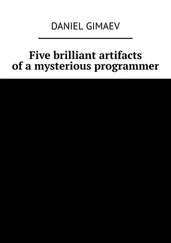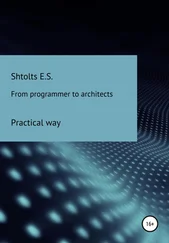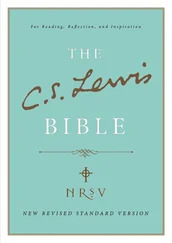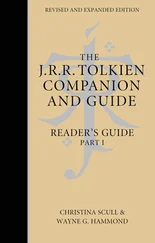Standard Template Library Programmer's Guide
Здесь есть возможность читать онлайн «Standard Template Library Programmer's Guide» весь текст электронной книги совершенно бесплатно (целиком полную версию без сокращений). В некоторых случаях можно слушать аудио, скачать через торрент в формате fb2 и присутствует краткое содержание. Жанр: Программирование, Справочники, на английском языке. Описание произведения, (предисловие) а так же отзывы посетителей доступны на портале библиотеки ЛибКат.
- Название:Standard Template Library Programmer's Guide
- Автор:
- Жанр:
- Год:неизвестен
- ISBN:нет данных
- Рейтинг книги:4 / 5. Голосов: 1
-
Избранное:Добавить в избранное
- Отзывы:
-
Ваша оценка:
- 80
- 1
- 2
- 3
- 4
- 5
Standard Template Library Programmer's Guide: краткое содержание, описание и аннотация
Предлагаем к чтению аннотацию, описание, краткое содержание или предисловие (зависит от того, что написал сам автор книги «Standard Template Library Programmer's Guide»). Если вы не нашли необходимую информацию о книге — напишите в комментариях, мы постараемся отыскать её.
Standard Template Library Programmer's Guide — читать онлайн бесплатно полную книгу (весь текст) целиком
Ниже представлен текст книги, разбитый по страницам. Система сохранения места последней прочитанной страницы, позволяет с удобством читать онлайн бесплатно книгу «Standard Template Library Programmer's Guide», без необходимости каждый раз заново искать на чём Вы остановились. Поставьте закладку, и сможете в любой момент перейти на страницу, на которой закончили чтение.
Интервал:
Закладка:
Introduction to the Standard Template Library
The Standard Template Library, or STL , is a C++ library of container classes, algorithms, and iterators; it provides many of the basic algorithms and data structures of computer science. The STL is a generic library, meaning that its components are heavily parameterized: almost every component in the STL is a template. You should make sure that you understand how templates work in C++ before you use the STL.
Containers and algorithms
Like many class libraries, the STL includes container classes: classes whose purpose is to contain other objects. The STL includes the classes vector , list , deque , set , multiset , map , multimap , hash_set , hash_multiset , hash_map , and hash_multimap . Each of these classes is a template, and can be instantiated to contain any type of object. You can, for example, use a vector in much the same way as you would use an ordinary C array, except that vector eliminates the chore of managing dynamic memory allocation by hand.
vector v(3); // Declare a vector of 3 elements.
v[0] = 7;
v[1] = v[0] + 3;
v[2] = v[0] + v[1]; // v[0] == 7, v[1] == 10, v[2] == 17
The STL also includes a large collection of algorithms that manipulate the data stored in containers. You can reverse the order of elements in a vector , for example, by using the reverse algorithm.
reverse(v.begin(), v.end()); // v[0] == 17, v[1] == 10, v[2] == 7
There are two important points to notice about this call to reverse . First, it is a global function, not a member function. Second, it takes two arguments rather than one: it operates on a range of elements, rather than on a container. In this particular case the range happens to be the entire container v.
The reason for both of these facts is the same: reverse , like other STL algorithms, is decoupled from the STL container classes. This means that reverse can be used not only to reverse elements in vectors, but also to reverse elements in lists, and even elements in C arrays. The following program is also valid.
double A[6] = { 1.2, 1.3, 1.4, 1.5, 1.6, 1.7 };
reverse(A, A + 6);
for (int i = 0; i < 6; ++i) cout << "A[" << i << "] = " << A[i];
This example uses a range , just like the example of reversing a vector : the first argument to reverse is a pointer to the beginning of the range, and the second argument points one element past the end of the range. This range is denoted [A, A + 6) ; the asymmetrical notation is a reminder that the two endpoints are different, that the first is the beginning of the range and the second is one past the end of the range.
Iterators
In the example of reversing a C array, the arguments to reverse are clearly of type double* . What are the arguments to reverse if you are reversing a vector , though, or a list ? That is, what exactly does reverse declare its arguments to be, and what exactly do v.begin() and v.end() return?
The answer is that the arguments to reverse are iterators , which are a generalization of pointers. Pointers themselves are iterators, which is why it is possible to reverse the elements of a C array. Similarly, vector declares the nested types iterator and const_iterator . In the example above, the type returned by v.begin() and v.end() is vector::iterator . There are also some iterators, such as istream_iterator and ostream_iterator , that aren't associated with containers at all.
Iterators are the mechanism that makes it possible to decouple algorithms from containers: algorithms are templates, and are parameterized by the type of iterator, so they are not restricted to a single type of container. Consider, for example, how to write an algorithm that performs linear search through a range. This is the STL's find algorithm.
template
InputIterator find(InputIterator first, InputIterator last, const T& value) {
while (first != last && *first != value) ++first;
return first;
}
Find takes three arguments: two iterators that define a range, and a value to search for in that range. It examines each iterator in the range [first, last) , proceeding from the beginning to the end, and stops either when it finds an iterator that points to value or when it reaches the end of the range.
First and last are declared to be of type InputIterator , and InputIterator is a template parameter. That is, there isn't actually any type called InputIterator : when you call find , the compiler substitutes the actual type of the arguments for the formal type parameters InputIterator and T . If the first two arguments to find are of type int* and the third is of type int , then it is as if you had called the following function.
int* find(int* first, int* last, const int& value) {
while (first != last && *first != value) ++first;
return first;
}
Concepts and Modeling
One very important question to ask about any template function, not just about STL algorithms, is what the set of types is that may correctly be substituted for the formal template parameters. Clearly, for example, int* or double* may be substituted for find 's formal template parameter InputIterator . Equally clearly, int or double may not: find uses the expression *first , and the dereference operator makes no sense for an object of type int or of type double . The basic answer, then, is that find implicitly defines a set of requirements on types, and that it may be instantiated with any type that satisfies those requirements. Whatever type is substituted for InputIterator must provide certain operations: it must be possible to compare two objects of that type for equality, it must be possible to increment an object of that type, it must be possible to dereference an object of that type to obtain the object that it points to, and so on.
Find isn't the only STL algorithm that has such a set of requirements; the arguments to for_each and count , and other algorithms, must satisfy the same requirements. These requirements are sufficiently important that we give them a name: we call such a set of type requirements a concept , and we call this particular concept Input Iterator. we say that a type conforms to a concept , or that it is a model of a concept , if it satisfies all of those requirements. We say that int* is a model of Input Iteratorbecause int* provides all of the operations that are specified by the Input Iteratorrequirements.
Concepts are not a part of the C++ language; there is no way to declare a concept in a program, or to declare that a particular type is a model of a concept. Nevertheless, concepts are an extremely important part of the STL. Using concepts makes it possible to write programs that cleanly separate interface from implementation: the author of find only has to consider the interface specified by the concept Input Iterator, rather than the implementation of every possible type that conforms to that concept. Similarly, if you want to use find , you need only to ensure that the arguments you pass to it are models of Input Iterator.this is the reason why find and reverse can be used with list s, vector s, C arrays, and many other types: programming in terms of concepts, rather than in terms of specific types, makes it possible to reuse software components and to combine components together.
Читать дальшеИнтервал:
Закладка:
Похожие книги на «Standard Template Library Programmer's Guide»
Представляем Вашему вниманию похожие книги на «Standard Template Library Programmer's Guide» списком для выбора. Мы отобрали схожую по названию и смыслу литературу в надежде предоставить читателям больше вариантов отыскать новые, интересные, ещё непрочитанные произведения.
Обсуждение, отзывы о книге «Standard Template Library Programmer's Guide» и просто собственные мнения читателей. Оставьте ваши комментарии, напишите, что Вы думаете о произведении, его смысле или главных героях. Укажите что конкретно понравилось, а что нет, и почему Вы так считаете.











